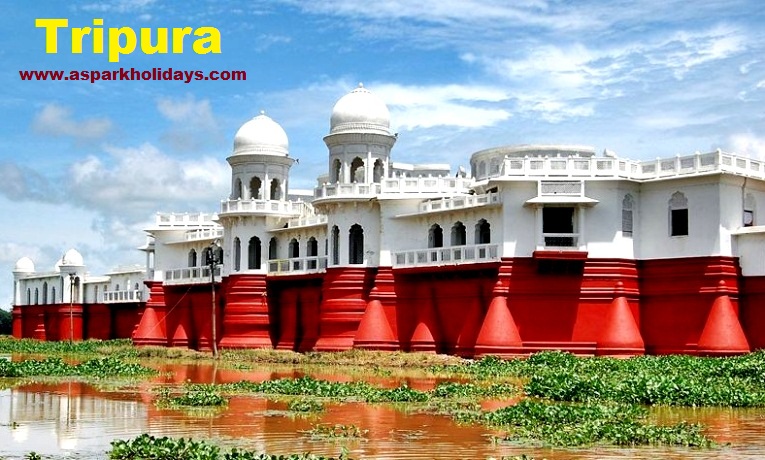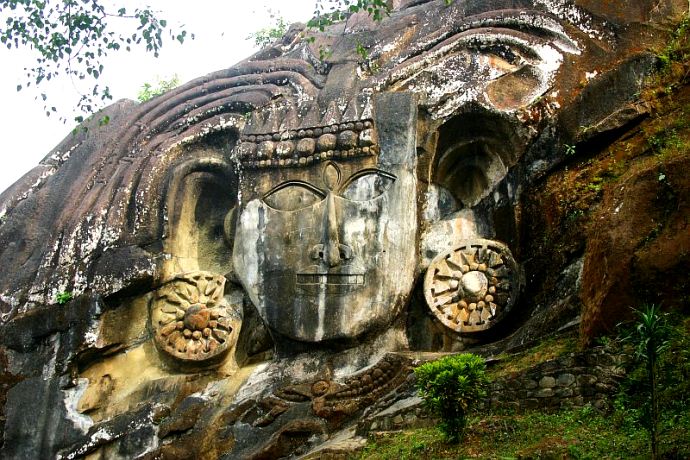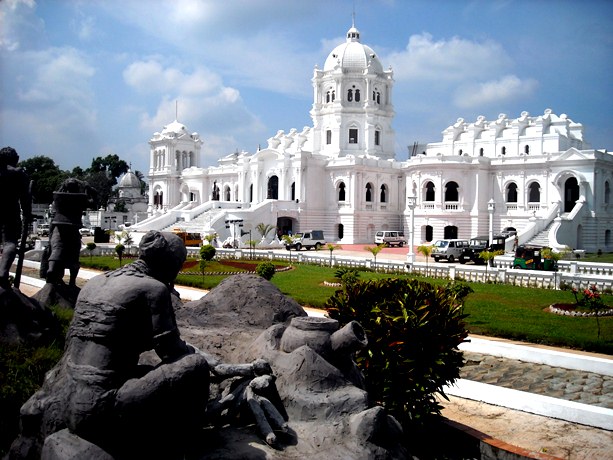
The state is surrounded by Bangladesh on its north, west and south. On its eastern side, it is surrounded by the state of Mizoram and Assam. Agartala is the capital of this state. As per the 2011 census, the population of the state is 36,73,032. It constitutes around 0.3% of the total population of the country. The indigenous communities that are known as ST (Scheduled Tribes) in India form 30% of the population in Tripura. The state has 19 tribes, and it is an eco-friendly and pollution-free state.
The languages that are mainly spoken in this state are Kokborok and Bangla. This state was ruled by the Tripuri dynasty for many centuries. It was considered as a princely state at the time of the British rule. In the year 1949, it became a part of independent India. The ethnic strife and conflict between the Bengali population and indigenous people have led to scattered violence and tension since the integration of this state in India. On the other hand, the institution of an independent tribal administrative organisation and various strategies have calmed the situation. National Highway 44 is the only main highway that connects this state with the rest of India.
History of Tripura- In Sanskrit, Tripura means 'three cities'. Paleolithic tools that are made from fossil wood are found in Khowai and Haora valleys. The state is mentioned in all the Indian epics like the Mahabharata, the Puranas, and the Edicts of Ashoka. Kirat Desh is the old name of Tripura. But, it is not clear whether Kirat Desh is coterminous with modern Tripura. The entire region of this state was ruled by Twipra kingdom for many centuries. As years passed by, the boundaries of the kingdom have changed. The state is house to various royal palaces as well as temples that attract tourists and vacationers from across the world. Agartala, the capital city, is a popular sight-seeing location.
Tripura became the princely state at the time of British rule in India. Udaipur that was located in the southern part of this state was the capital of Twipra Kingdom. Bir Chandra Manikya modelled and displayed the administration on the British India pattern. He also enacted reforms that include the formation of the Municipal Corporation of Agartala. After India gained independence in the year 1947, the Tippera district became a part of East Pakistan. The Tripura Merger Agreement was signed by the Maharani Regent in the year 1949. In the year 1956, the state became a union territory. An elected ministry was set up in the year 1963.
Climate and Geography- Tripura is one of the smallest states of India after Sikkim and Goa. You can use the national highway in order to reach this place. The highway passes through the Mamit and Karimganj district of Mizoram and Assam respectively. The physiography of the state is characterised by plains, valleys and hill ranges. Tripura has five anticlinal hill ranges that run from north to south. They also run through Shakhan, Longtharai, Japui Hills and Athamura in the eastern side and Boromura in the western side. The intervening and prevailing synclines are Agartala-Udaipur, Kamalpur-Ambasa, Khowai-Teliamura, Dharmanagar-Kanchanpur and Kailasahar-Many valleys. The highest point of the state is Betling Shib that is located in Jampui range. The altitude of Betling Shib is 3,081 feet or 939 meters.
The isolated hillocks that are scattered throughout this state are called tillas. On the other hand, the narrow alluvial valleys that are located on the western side are known as lungas. There are various rivers that originate from the hillocks and flow in Bangladesh. The Dhalai, Khowai, Juri, Longai and Manu flow to the northern side, Feni and Muhuri in the southwest side and the Gumti in the western side. The winter season is from December to February, monsoon season from May to September, summer or pre-monsoon season from March to April, post-monsoon season from October to November. At the time of the monsoon season, the state witnesses frequent floods due to heavy rains.
Transport- National Highway (NH) 44 is the only main road that connects this state to the rest of the country. It starts at Sabroom located in the Southern part of Tripura. It then heads to the northern side of Agartala, the capital city of Tripura. After that, it turns to east, northeast and enters Assam. The highway is also called the 'Assam Road', and it is considered as the lifeline of the state. Manu is a town in the district of south Tripura that is connected by another highway NH 44A with Aizawl, the capital city of Mizoram.
Agartala is well-connected by air. The airport is located in the capital city, Agartala that connects it with other Indian cities. In addition, there are also connecting flights to Mumbai, Ahmedabad, Chennai, Bangalore, Guwahati, Aizawl, Silchar, Delhi, Imphal and Kolkata. The airport in Agartala is the second busiest airport after Guwahati airport in the Northeast. Tripura has the international border of 856 km with Bangladesh. The main railway station in Tripura that connects to the railheads of Kolkata, Delhi, Indore, Chennai and Bangalore is in Kumarghat. There is also a bus service between Dhaka, the capital city of Bangladesh, and Agartala.
Need Aspark Help?
For Tour Packages, Vehicle Rental and Customer Care Support.
+91 9999 31 7846
booking@asparkholidays.comWhy Travel with Us?

Excellent Support
Our Team Available 24x7 for Customer support
Best Price & Savings
We Offer the Most Competitive Prices.


